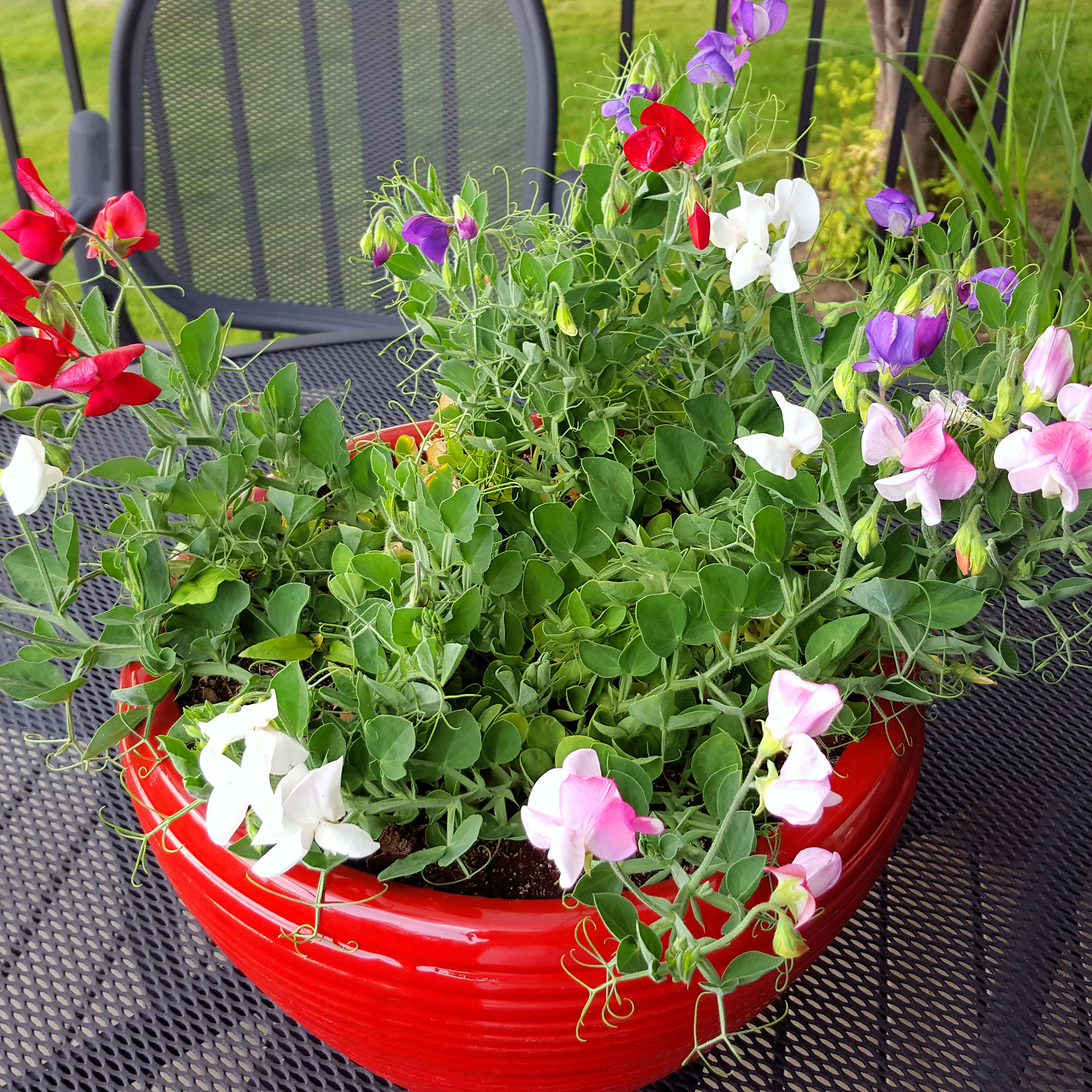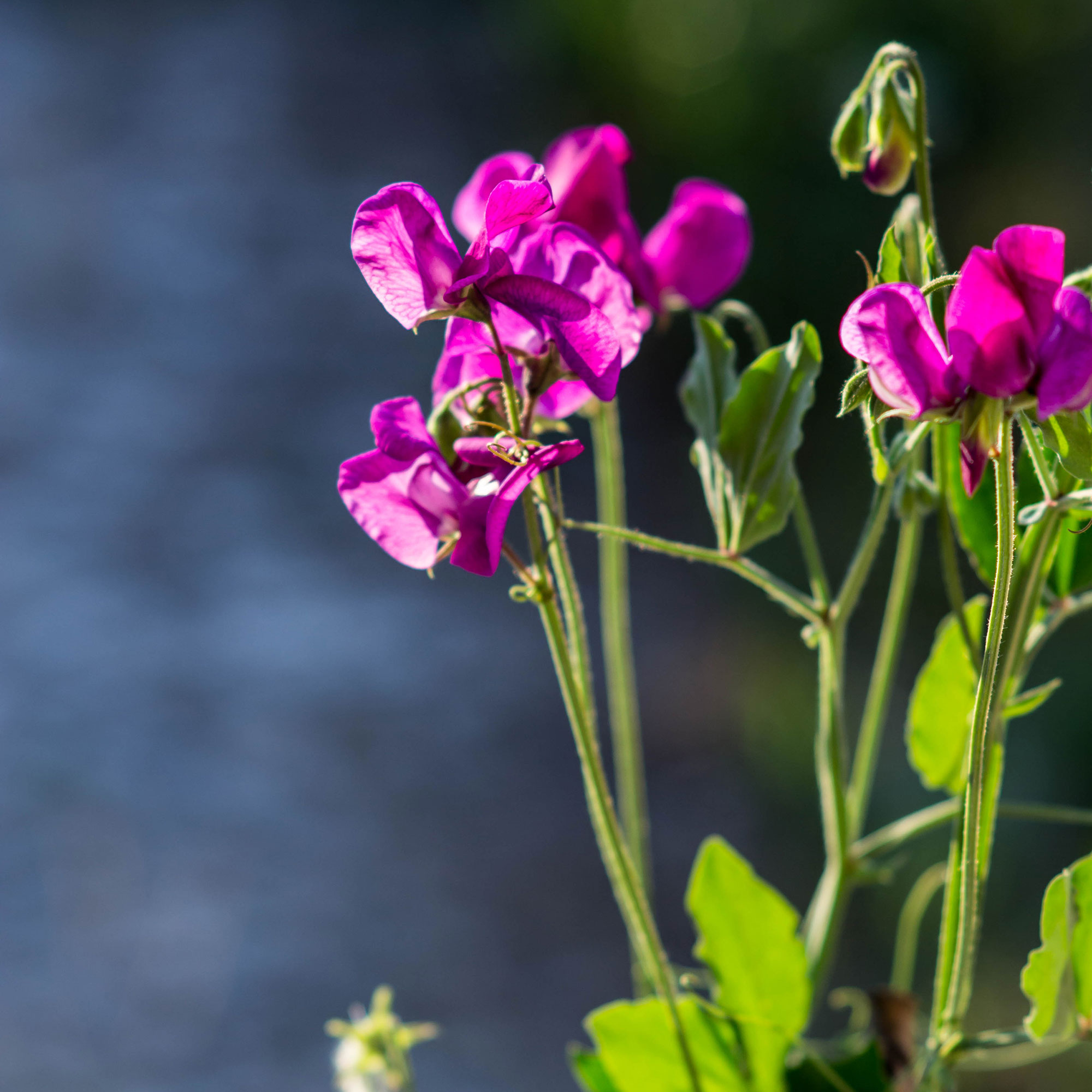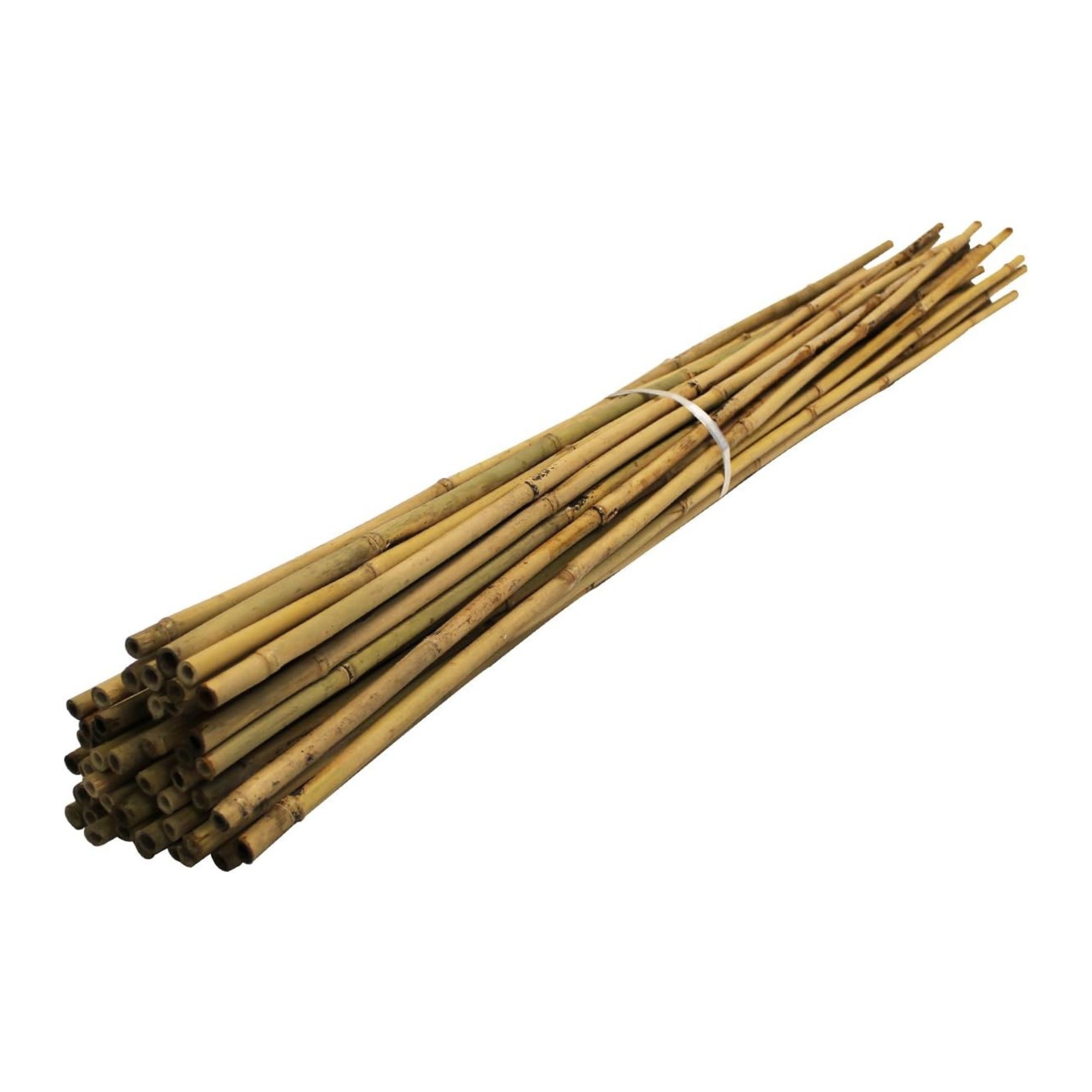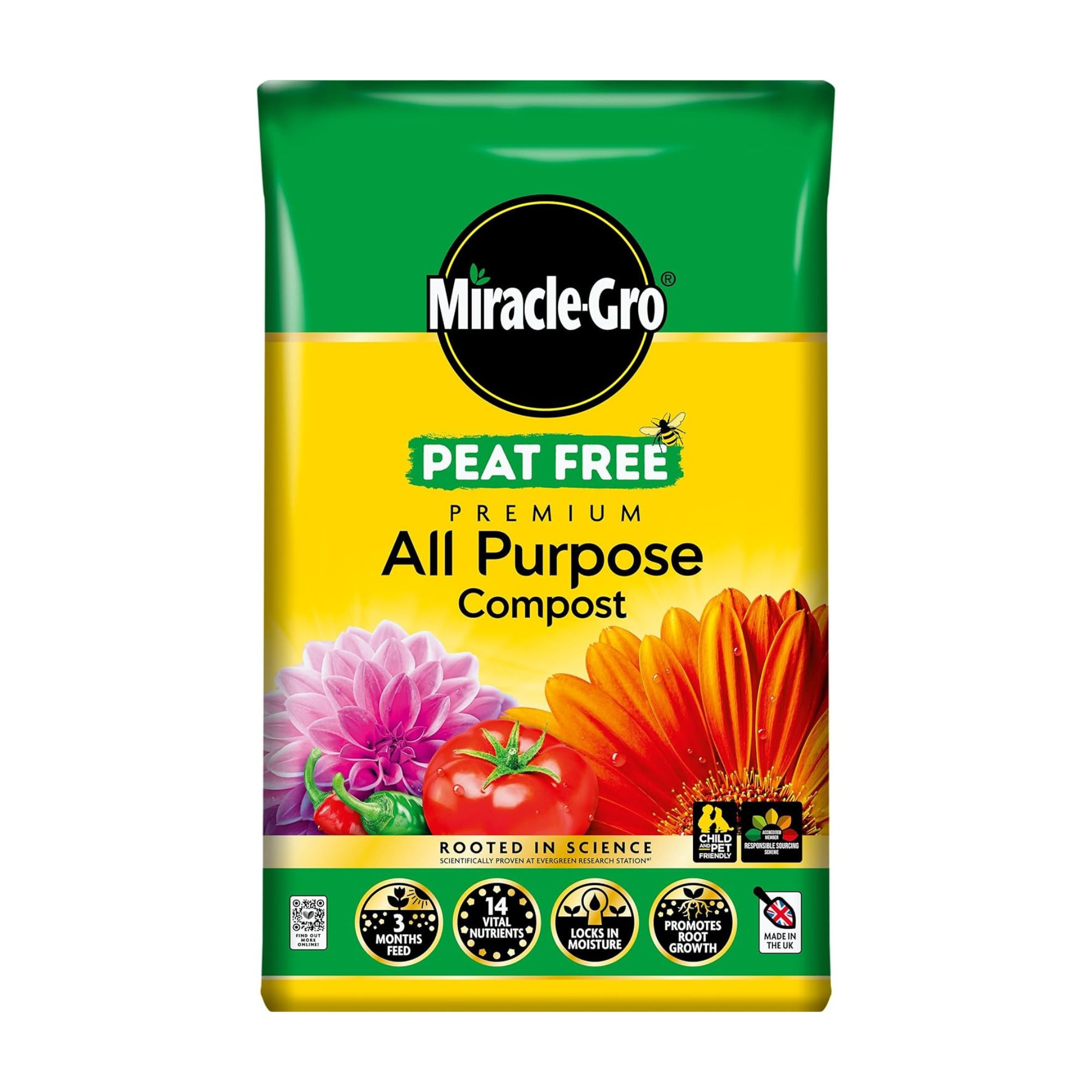How to grow sweet peas in pots to add colour and vibrancy to your patio this summer
Sweet peas grow beautifully in pots… as long as you can offer them what they need


As sweet peas only live for a year, there’s a lot of pressure to grow them perfectly. And while some people assume that this perfect environment is in garden borders and raised beds, that’s not the case at all. In fact, if you nail how to grow sweet peas in pots, they'll be just as blooming beautiful.
But if you don’t have in-ground planting space, you don’t need to worry. Sweet peas also grow beautifully in pots as long as you know how to care for sweetpeas. With their delicate petals, their wide array of colours, and their delicious fragrance, sweet peas are ideal for those who have dreamt of bringing their cottage garden ideas to life.
So, whether you want to make your patio look expensive or add some colour to your front porch ideas, we think it’s probably time that you started growing sweet peas in pots.
How to grow sweet peas in pots
If you’re looking to up the ante and take your container garden ideas up a notch, adding sweet peas is the way to do it. They’ll add colour and depth, and they can even add some privacy to an overlooked outdoor space. But how do you grow sweet peas in pots? Well, we’ve got you covered.
What you'll need
Step-by-step
1. Choose between seeds or plugs
To successfully grow sweet peas in pots, you have two options: You could either grow sweet peas from seed and then transplant the seedlings into the containers, or you could buy established plugs and plant them straight into the pot of your choosing.
Of course, growing sweet peas from seed will take longer and require more effort. You must also know when to sow sweet peas to grow happy and healthy seedlings.
Growing from seed is considered to be the most affordable option, though, as plugs can be expensive.
Get the Ideal Home Newsletter
Sign up to our newsletter for style and decor inspiration, house makeovers, project advice and more.
Ultimately, the choice is yours, but as an 'instant gratification gardener' who loves to see results as soon as possible, my personal choice is to buy plugs.

2. Fill the container with compost
Although sweet peas grow well in pots, they need the right kind of pot and the right kind of compost to thrive. And as sweet peas develop long, large roots, they need space to grow.
John Clifford, garden expert at Gardenstone, says, ‘Pick a large pot that has decent drainage holes. Sweet peas prefer well-draining soil as well as a lot of deep space for their roots to grow down.’
So, fill the containers with a mixture of rich, peat-free, loam-based potting compost. Alternatively, Kate Turner, Gardening Guru for Miracle-Gro, suggests using ‘well-rotted manure to improve drainage and fertility.’
3. Build the supports
Anyone who has ever grown sweet peas in the ground knows that these fast-growing climbers can grow to be extremely wild. Not only will they grow in height, but they’ll also grow in width thanks to the side shoots. This is also the case for those who want to grow sweet peas in pots.
To support and train your sweet peas, it’s best to build your supports in the container before adding the plants. You can build them using bamboo canes or buy a pre-made frame - like this Metal Garden Obelisk from Amazon.
Morris Hankinson, director of Hopes Grove Nurseries, explains, ‘Make sure the canes are secure by tying them together at the top with string into a teepee shape. This will support the growing sweet peas, which grow really high.’

Morris Hankinson is the founder and managing director of Hopes Grove Nurseries Ltd, the UK’s only specialist grower-retailer of hedging plants. He established the thriving business in 1992, shortly after graduating with a Commercial Horticulture Degree from Writtle College, Essex.

4. Plant the sweet peas
When you’ve got the support structure in place, you can then plant your seedlings or plug plants. Aim to plant them as close to the supports as possible, to ensure that they’ll grow up the frame as they get bigger.
John says, ‘Plant the seedlings into the holes, and then press down on the soil and make sure they're sitting properly and sturdily.’
As sweet peas need a lot of room for their roots, avoid planting too many sweet peas in one container. If you have a 1-litre container, it’s recommended to plant around two plants per pot for healthy, strong sweet peas.
However, you should be able to stretch to four plants per pot if you prefer a bushier look.
5. Maintain a water and fertilising schedule
Then, it’s time to wait for your sweet peas to grow. To ensure that they grow to the best of their ability, though, you need to give them the right care and attention.
For starters, sweet peas will thrive in full sun - which is great news for those with a south-facing garden. But the beauty of growing sweet peas in pots is that you can move them around and chase the sun if you don’t have a south-facing garden.
Morris has also shared some extra tips for caring for sweet peas in pots. He says, ‘Water weekly or more in hot/dry weather but don't over water, and they may benefit from an additional feed during the flowering season such as a comfrey tea or seaweed feed.'

6. Pinch them!
When looking to arrange pots in a garden, you want to make sure that every container makes a bold statement. And while general care and attention will help sweet peas grow in pots, you can make them look even better with a simple hack.
Yes, knowing how to pinch sweet peas can lead to denser and bushier plants and is particularly handy for those who want to add some side shoots to their tall, leggy sweet peas.
You should do this when the plants are around 15-20cm tall (or when they have at least four sets of leaves), and all you need to do is cut above a set of leaves on the tip of the main stem.
Then, you can sit back and enjoy your sweet peas! Just remember to deadhead your sweet peas every now and then, too.
FAQs
Do sweet peas grow well in pots?
Yes! Sweet peas grow incredibly well in pots as long as they have enough space for their large roots and have support as they grow. Sweet peas in pots also need to be planted in high-quality soil.
In terms of care and attention, sweet peas in pots prefer to be in full sun and need regular watering and fertilising.
Do sweet peas need something to climb on?
Yes, definitely. Sweet peas are climbing plants, and they need something to climb on to reach their full potential.
It’s very easy to make your own sweet pea climbing frame using bamboo sticks and string, but you can also buy ready-made frames online to make your life even easier.
Now you know how to grow sweet peas in pots, it’s time to get planting!

Lauren Bradbury has been the Content Editor for the House Manual section since January 2025 but worked with the team as a freelancer for a year and a half before that. She graduated with a Bachelor’s degree in English and Creative Writing from the University of Chichester in 2016. Then, she dipped her toe into the world of content writing, primarily focusing on home content. After years of agency work, she decided to take the plunge and become a full-time freelancer for online publications, including Real Homes and Ideal Home, before taking on this permanent role. Now, she spends her days searching for the best decluttering and cleaning hacks and creating handy how-to guides for homeowners and renters alike, as well as testing vacuums as part of her role as the Ideal Home Certified Expert in Training on Vacuums, having spent over 110 hours testing different vacuum models to date!
-
 Wood drenching is the calming new twist on the colour drenching trend – here’s how to make the look work in your home
Wood drenching is the calming new twist on the colour drenching trend – here’s how to make the look work in your homeIt’s easier than ever to embrace natural materials
By Maddie Balcombe
-
 Aldi is launching a £200 day bed with four different features - its sleek design is suited to the whole family
Aldi is launching a £200 day bed with four different features - its sleek design is suited to the whole familyYou don't want to miss out on this Specialbuy
By Kezia Reynolds
-
 How to set up a drip watering system that saves water and a lot of effort
How to set up a drip watering system that saves water and a lot of effortKeep your plants hydrated (and your water bill down) with this clever garden watering solution
By Natalie Osborn


